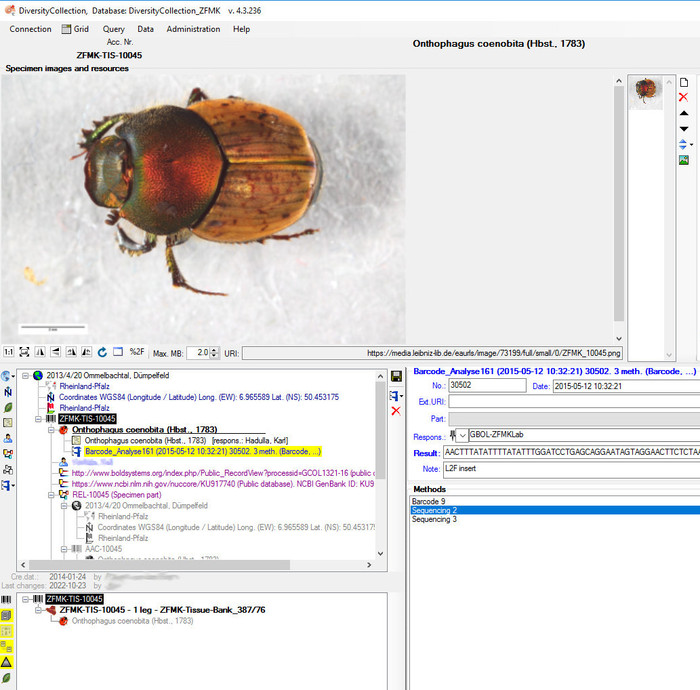The Diversity Workbench framework at the Leibniz Institute for the Analysis of Biodiversity Change: From the collection object to FAIR data
The Leibniz Institute for the Analysis of Biodiversity Change is one of eight data centers in GFBio and NFDI4Biodiversity, which provides services in collection and research data management. At LIB, we explore the causal relationships of biodiversity loss. The information we deal with is from natural and cultural history collections, morphological and genetic analyses, surveys, environmental samples, and data flows from monitoring stations. This research is a holistic process in which all information is made available at all times to all relevant user groups, like project partners or the general public.
The diversity and volume of data continuously confronts us with new challenges, as the requirements for the information infrastructure are also constantly changing: from initial static web pages in the 1980s to database-supported dynamic web portals, highly linked and universally accessible computer actionable services are now necessary to make the information usable across disciplines for any questions and applications.
On the one hand, a well-structured and dynamically adaptable data infrastructure is important to meet this need; on the other hand, good networking with other stakeholders and data centers is a necessity for the successful provision of information according to the FAIR-Data principles, in order to keep the information accessible, comparable and understandable in the long term.
This view on the user requirements of research and collection information implies that the generation of the data is easy and the accuracy and quality of the data is assured. With the Diversity Workbench Framework, we at LIB have been using a modular system for the easy acquisition and management of collection- and research-based information for more than ten years. This system has grown with the times and is now able to manage almost any research information (e.g. genetic barcodes in DiversityCollection, morphological trait matrices in DiversityDescriptions), and also supports knowledge transfer to the society, e.g. in the FörTax project, in which information on taxonomic training opportunities in Germany is managed extensively in DiversityAgents and made visible and searchable on a website (https://foertax.de).
In the presentation, the way of digitizing a voucher specimen from the creation of the entry in DiversityCollection to the publication on e.g. GBIF will be demonstrated to exemplify the possible use and application of Diversity Workbench at LIB. This includes:
- The data collection via standardized templates,
- The annotation with additional information, such as genetic sequences and multimedia files,
- The use of additional Diversity Workbench modules for linked information enrichment of the specimen entry,
- The mapping and facilitation of work processes within the LIB using Diversity Workbench,
- The embedding in national and international biodiversity assessment projects (example: Caucasian Barcode of Life and GBOL,
- The embedding in the information infrastructure of GFBio and NFDI4Biodiversity and the barrier-free search in the Digital Catalog of the LIB,
- The publication on portals such as GGBN and GFBio,
- The access to the data for the computer via APIs (https://id.zfmk.de/).

DWB as used by LIB in the German Barcode of Life (GBOL) project.
_____________________________________________________________________
Download pdf with the presentation: The Diversity Workbench framework at the LIB: From the collection object to FAIR data

